
Strategies for Increasing Secondary Consumption at Water Parks
Source:
Author:
Release time:
2025-05-18
Click to view details


From June 12-13, the China Association of Travel Agencies (CAAPA) will hold the 2025 China Family Tourism Innovation and Development Forum at Shanghai LEGOLAND Resort. Click here for details
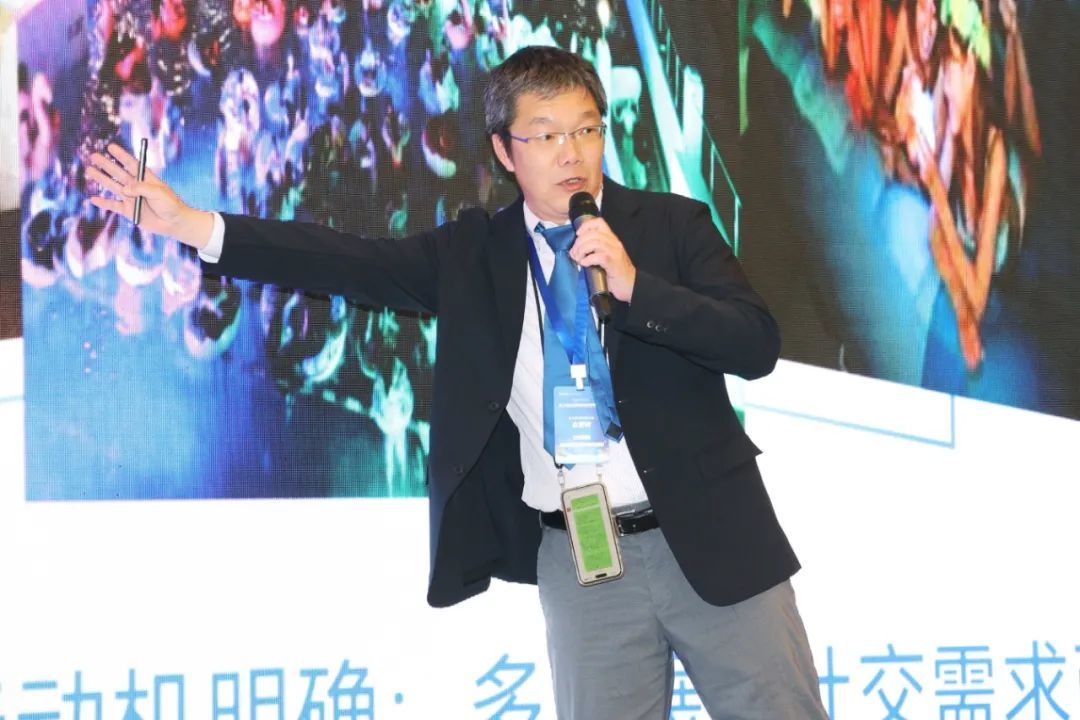
From May 8-9, the 2025 Water Park Quality Improvement and Efficiency Enhancement Executive Training Class, hosted by the China Amusement Machine and Amusement Park Association (CAAPA), was held at Hangzhou Kaiyuan Sen Holiday Resort. Mr. Yongye, a senior consultant at Junzhiqingzuo Business Consulting, gave a presentation on Strategies for Increasing Secondary Consumption in Water Parks The following is the full text of his speech.
Since I dedicated myself to the theme park industry, I have developed a deep connection with water parks. Although I am getting older and cannot conduct quarterly inspections of dozens of water park facilities as I did in the past, I have worked with and provided consulting services to approximately 50 water parks, with a total of over 200 visits.
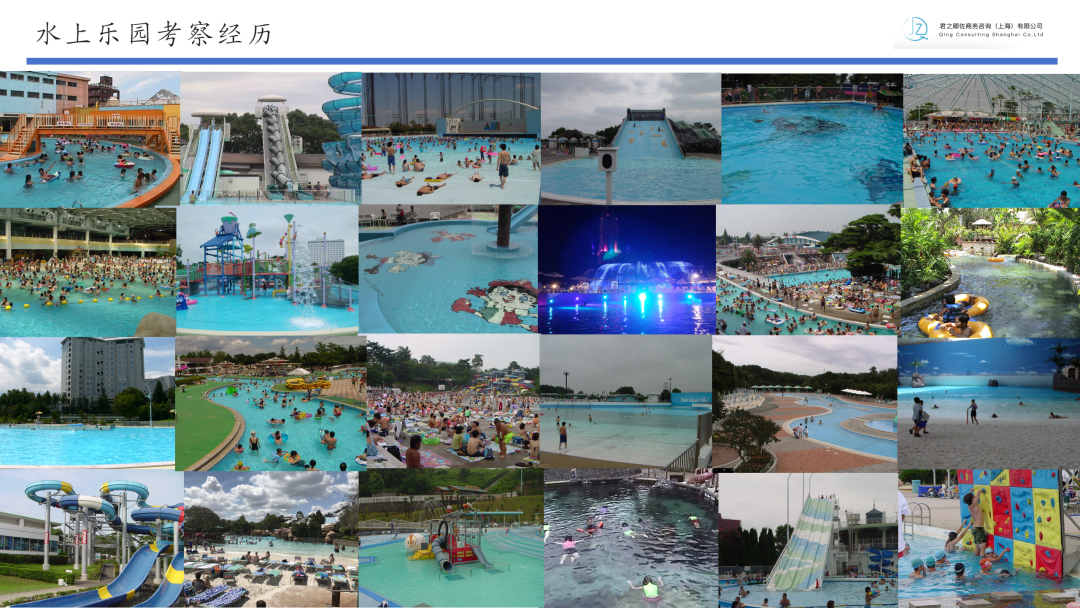
As a consulting company, we conducted a "dynamic survey" of water park visitors, observing and recording their behavior patterns within the park, and obtained the corresponding survey results. Since directly listing data and observation records is somewhat obscure, we set the horizontal axis as the length of stay of each visitor group in the park (from entry to exit), and marked the proportion of time spent at each facility, creating the following chart:
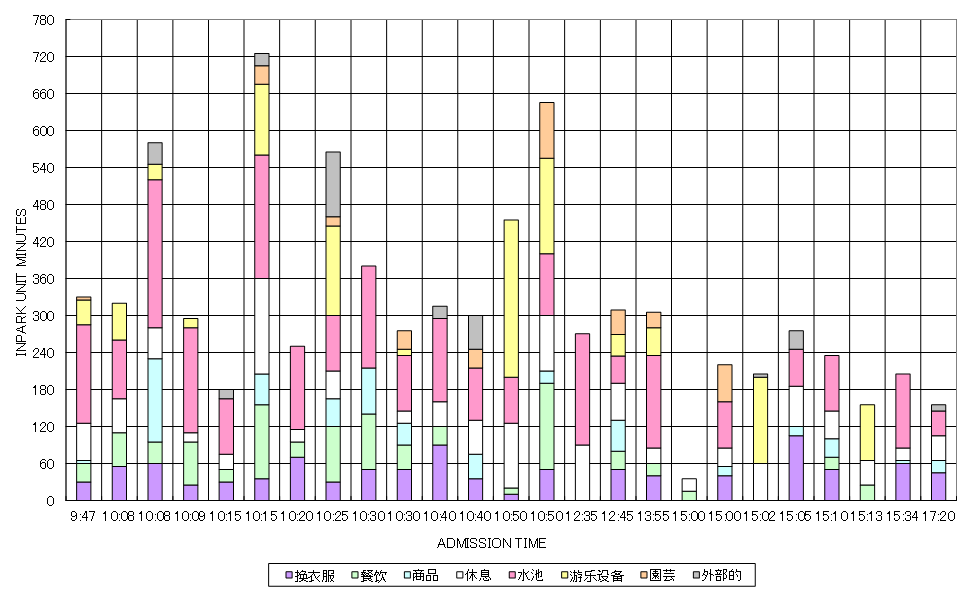

The chart shows that although it is generally believed that Japanese theme parks are superior to domestic ones in terms of utilization rate and unit price of merchandise sales facilities, for water parks, visitors must stay for more than 2 hours before making any merchandise purchases. This is common.
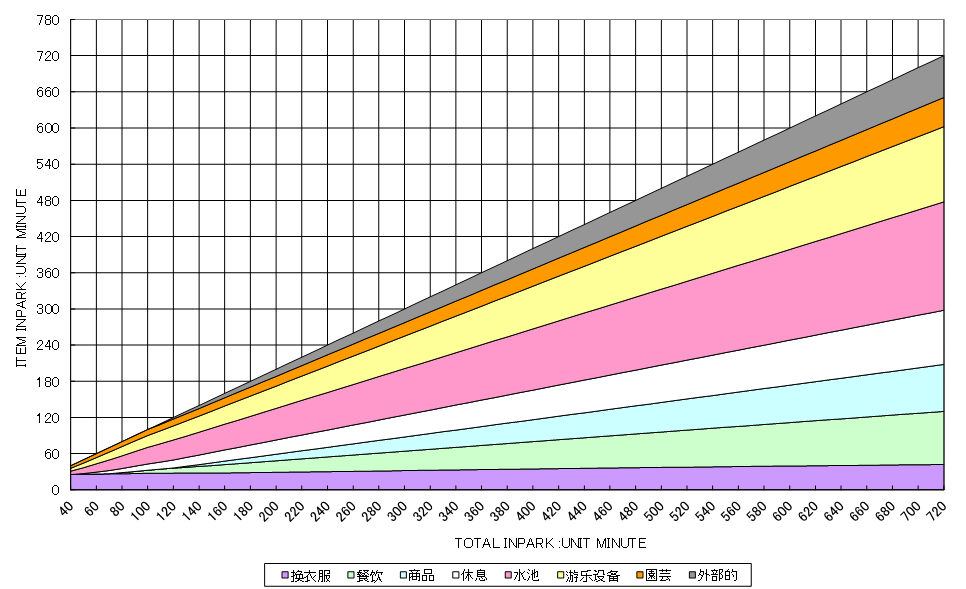

If we further analyze the consumption situation of visitors at different stay periods in 2-hour units, we can find that: although the proportion of visitors staying at the water park for 4 hours is the highest, catering consumption only accounts for 10% of the total stay time, and merchandise consumption is as low as 7%. In other words, the time visitors actually spend on secondary consumption in water parks is extremely short. However, changing time (including the total time before and after use) is basically stable at around 30 minutes. At the same time, what shows a positive correlation with the stay time is the time visitors spend playing in the pool area, which is undoubtedly the main motivation for visitors to come to the water park.


Through this "tracking observation method" that requires no additional funding, we can clearly and accurately grasp the actual flow of visitors in the park. Here, I strongly recommend that operators of water parks try this method to better understand visitor behavior and provide a strong basis for subsequent operational decisions. As for the specific operation methods and data analysis methods, you can consult us at any time, and we will provide detailed guidance.
At the time of the above survey, the night-time consumption demand of water parks was not as strong as it is now. However, nowadays, the most popular time for Japanese water parks has become the night. Although there is a popular concept of "night swimming pools" in Japan, due to the significantly shorter stay time of visitors in night water parks compared to daytime, this poses a greater challenge to secondary consumption.
In the following section, I will combine actual situations and experiences to provide specific and in-depth explanations and analyses on how to achieve good and sustainable operations in such an operating environment.
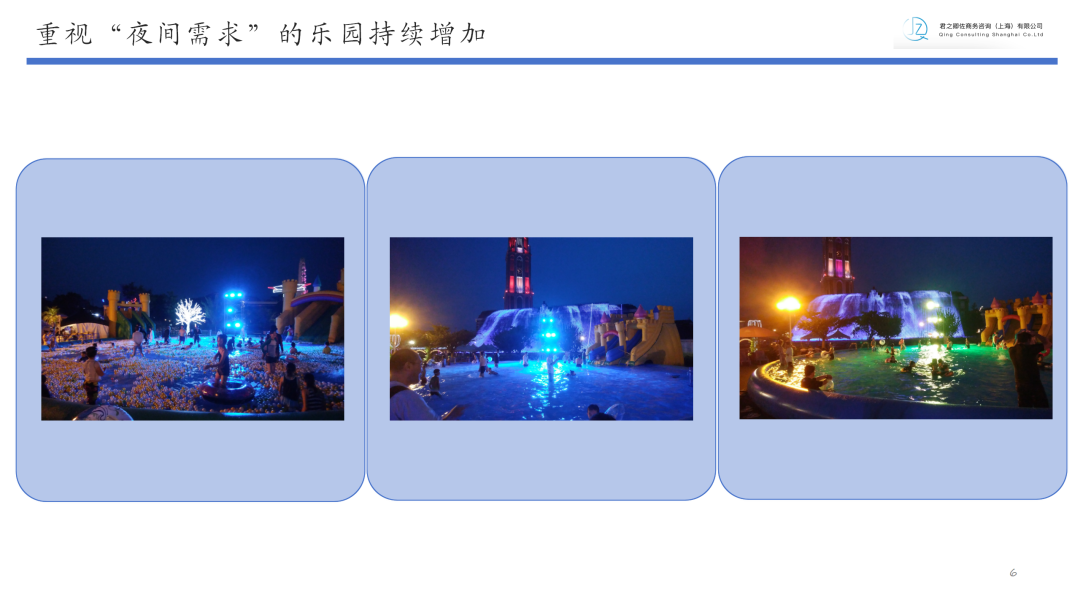
First, we need to clarify a conceptual distinction: amusement facilities without pools are called "amusement parks" or "theme parks"; facilities with pools as the core attraction are defined as "water parks." Clarifying this concept is important for our subsequent discussions and analyses.
For theme parks, secondary consumption almost entirely depends on the two major sectors of "catering" and "merchandise sales." Although there are also businesses such as stroller and wheelchair rentals, the target audience is relatively limited. In recent years, although some new forms of consumption such as paid viewing seats have emerged, overall, their sales are still difficult to compare with catering and merchandise sales.
On the other hand, water parks have "space rental" businesses that are characterized by high unit prices and high frequency. In the early days, space rentals mainly consisted of simple lounge chairs, but in recent years, with the continuous upgrading and changes in market demand, tent-style private spaces have gradually emerged, and even hotel-level custom room rental services have appeared. However, due to the main demand of visitors to "spend a long time playing in the water," water parks have fewer opportunities for catering and merchandise consumption compared to theme parks.
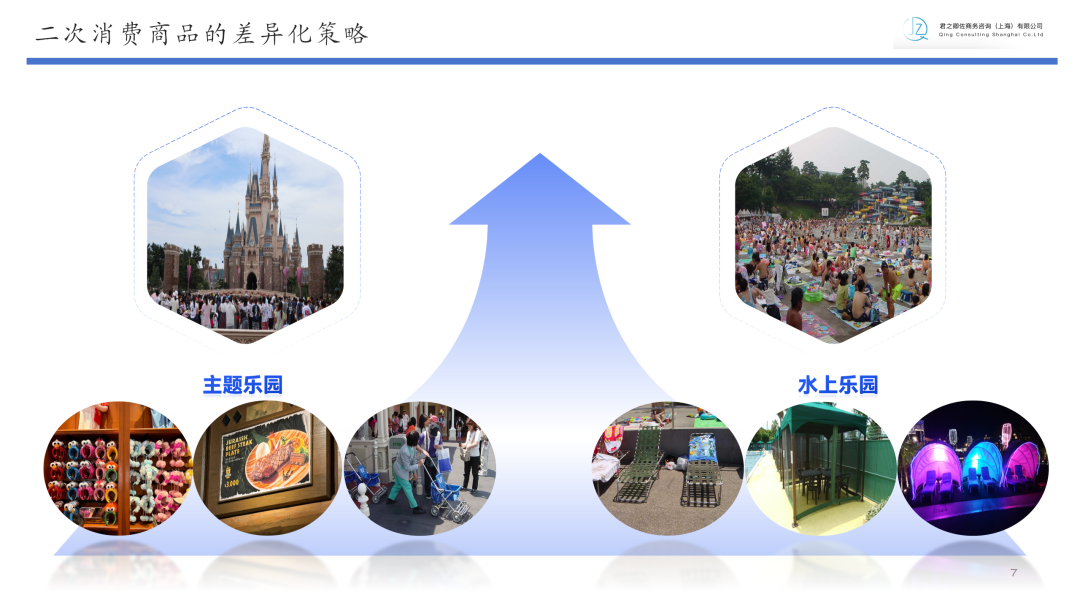
Currently, popular products in water parks include: waterproof phone cases, sunscreen, and hooded cooling towels. The reason why these products are popular is that they accurately address the pain points of visitors during their play:
* Waterproof phone cases need to clearly indicate the specific waterproof performance index, and phone cases with floating performance (will not sink to the bottom) are more popular;
* Sunscreen must clearly indicate the exact sun protection factor so that consumers can choose according to their own needs;
* Towel products need to have both a hooded design and a cooling function to meet the actual needs of visitors during water play.
It is worth mentioning that hooded towels are becoming increasingly popular in some theme parks without pools, and are often sold as summer-limited IP co-branded products. For example, the previously popular One Piece co-branded products were very popular among visitors.
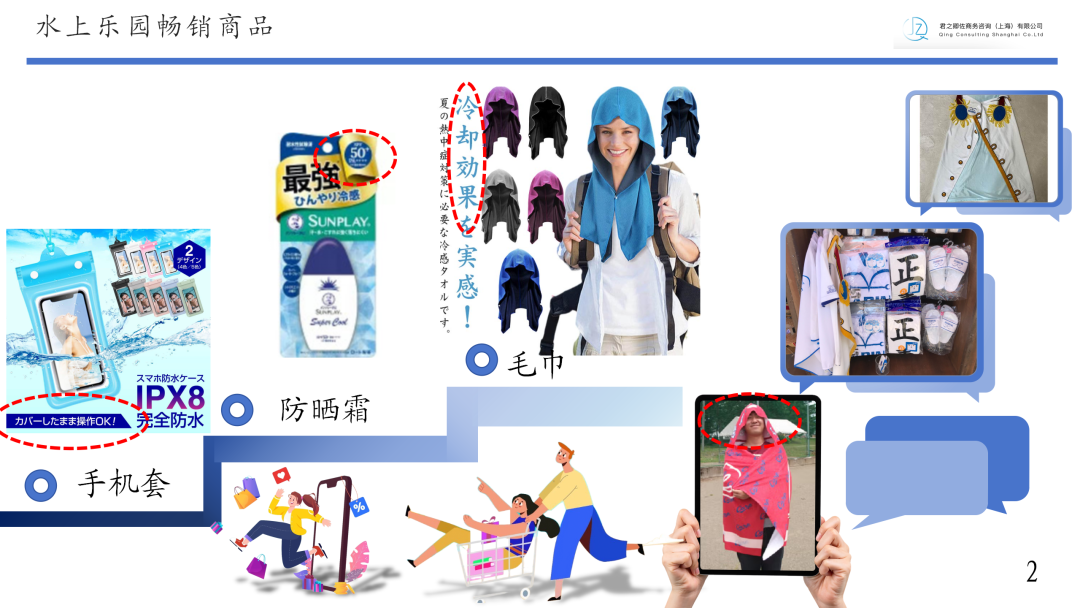
So, what is the key to triggering consumption during a visitor's stay at a water park? The key lies in whether we can successfully convey to visitors the core appeal of "being able to spend more comfortably than others in the park," and whether we can fully demonstrate the "higher safety" characteristics of equipment such as "waterproof phone cases," thereby helping visitors better achieve their play goals.
In other words, allowing visitors to truly feel a superior experience compared to others during their play, that is, higher comfort, and the higher safety performance of the equipment sold in the park, is the core meaning of improving secondary consumption in water parks.

Next, let's turn our attention to the catering sector, an important part of secondary consumption, where "hot food" is particularly crucial. Although the peak season for water parks is usually in the hot summer, it is important to note that visitors who play in the water for a long time, especially children, will lose body heat significantly. In order to effectively extend the visitor's stay time, it is necessary to provide "warming food." In some Japanese water parks, udon noodles, ramen, and curry rice are widely welcomed by visitors, and hot drinks are usually available. If such warming hot food is lacking, visitors may leave early due to low body temperature, which will inhibit overall catering consumption.
Unlike theme park dining, which often prioritizes eye-catching presentation, especially with IP-themed meals to attract visitors and stimulate spending, water park dining experiences are more fragmented. Therefore, speed of service is prioritized over visual appeal. For example, pasta, a common dish in theme parks, is rarely popular in water parks.

This finding also reveals some characteristics and patterns of nighttime operations.
Visitors to water parks at night have a more defined purpose, often driven by social display. Beyond the core appeal of swimming, their interest in other consumption options is relatively low. Therefore, strategies aimed at extending stay times to boost rental service consumption are often ineffective during nighttime operations. Currently, most nighttime facilities only offer basic space rentals to meet basic visitor needs.
Compared to daytime operations, nighttime operations differ significantly in several aspects:
1. Visitor preferences for product materials differ; shiny materials are popular, especially floatation devices that can be used as photo props. Female visitors particularly value the design and color coordination of products;
2. Double-person rental spaces are the mainstream choice. While seemingly catering to couples, this service is primarily used by groups of female friends.


In addition, nighttime visitors tend to swim more frequently, directly driving strong demand for beverages. Due to the need for photogenic appeal, straw lids have become a key selling point for beverages. As temperatures drop, the sales of shawls also increase, with neck-wrap style towels recently being particularly popular.
It is worth noting that this group of visitors, whose primary purpose is photography, has the distinct characteristic of "short-duration, high-frequency" visits. While their individual stay times are short, their repurchase rate is relatively high. Therefore, we need to design service systems specifically to meet their needs to better attract and serve these visitors.
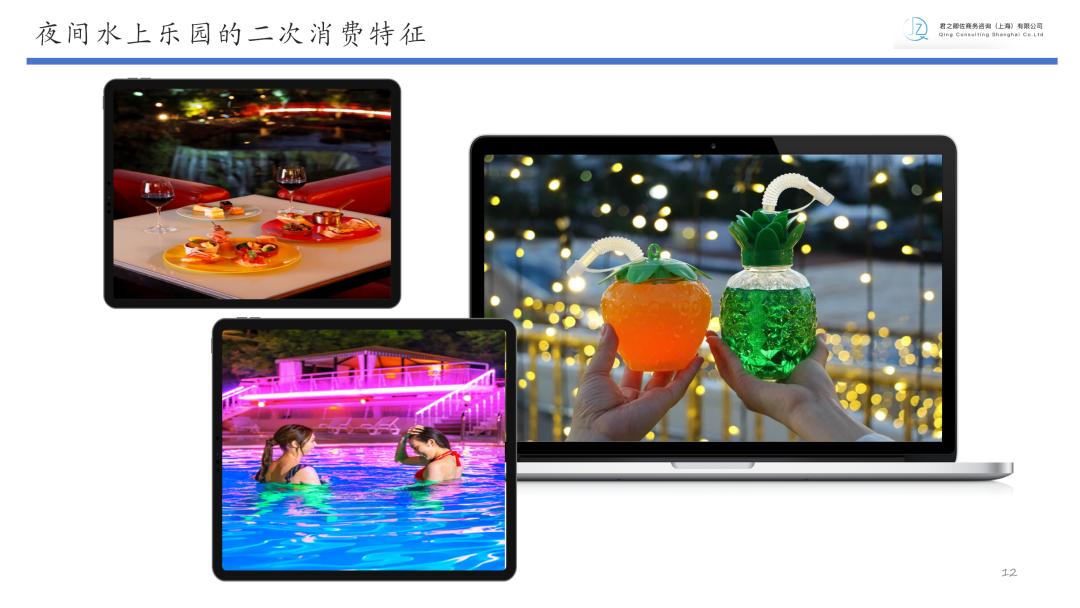
Theme parks typically extend visitor stay times and promote consumption by creating themed shops, such as IP-themed stores and general souvenir shops. However, water parks require a "pre-swimming convenience store" model. Specifically, this means immediately addressing visitor needs after they change clothes, whether in terms of product sales or equipment rentals; the pre-swimming period is the best time for sales conversion.
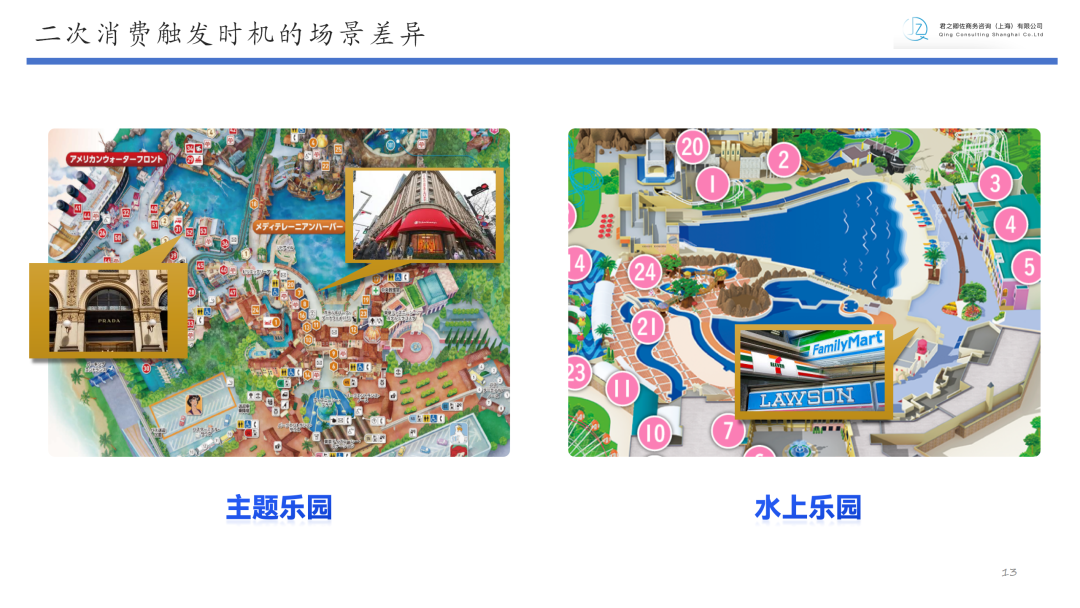
In terms of product sales, visitor needs change over time. For example, in 2004, floor mats were popular in water parks, while after 2018, best-selling items often focus on items visitors easily forget. These can be categorized as follows:
* Essentials: such as swimwear, although the forgetfulness rate for these items is relatively low;
* High-demand items: such as waterproof phone cases and sunscreen, these items are often forgotten at home or in the car, hence the high demand;
* Unexpected bestsellers: such as baby diapers, this is due to Japan's strict water quality management policies creating an emergency demand.
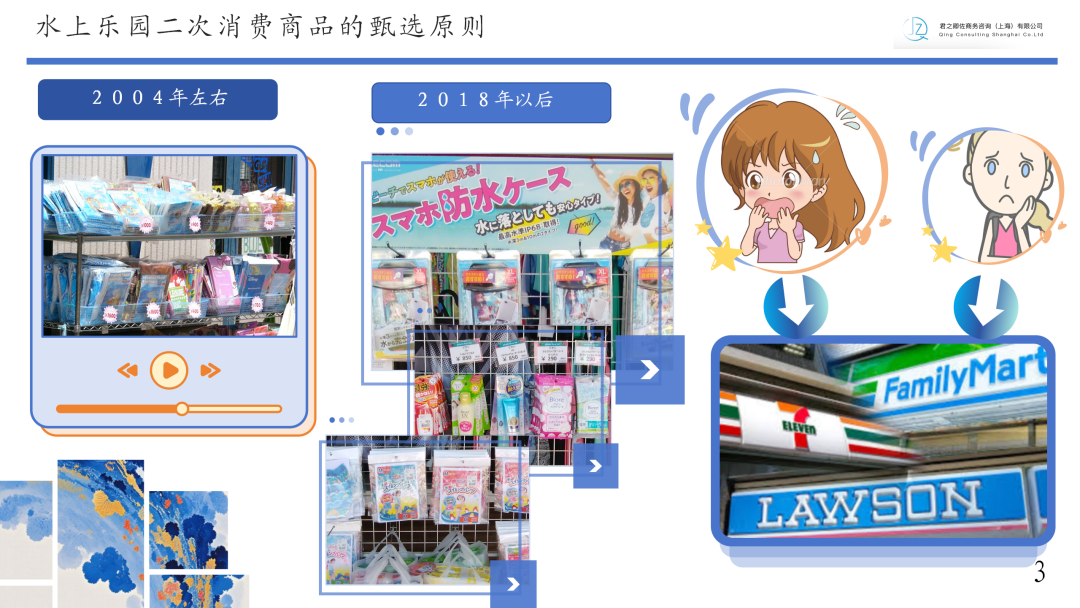
For "forgotten items," two key points need to be considered:
1. Small-size design: for example, offering single-day sunscreen to meet short-term needs;
2. Low-price strategy: adopting a high-volume, low-margin model to attract more visitors.
It is important to note that unlike European and American parks that tend to offer large-capacity products (bottom right image), Asian day-trip visitors prefer immediate consumption, so small-sized, low-priced products better meet their needs (bottom left image).

For shoe sales, we recommend a "full-size display + dynamic replenishment" model. This means displaying samples of all sizes in the display area and promptly replenishing stock when a particular size is sold. This model not only provides size guidance for visitors but also creates a sense of scarcity, prompting quicker purchase decisions.
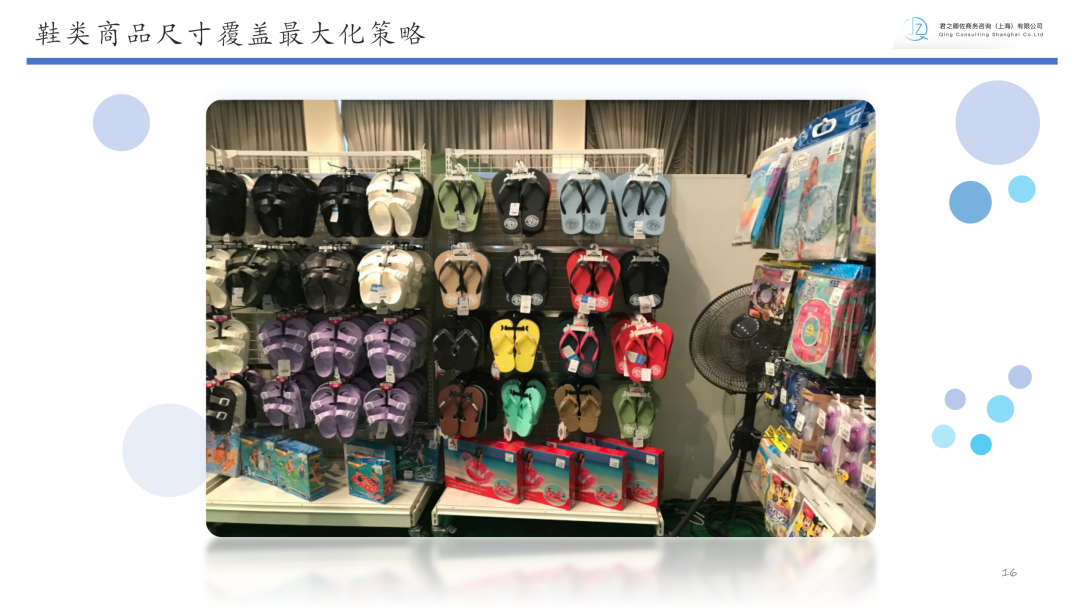
In terms of product display, the "convenience store logic" should be followed. Core products should be prominently displayed using concentrated end-cap displays. While water parks don't use the sales ranking-based product display logic of theme parks due to significant differences in product categories, the principle of "bestsellers first" is common—placing best-selling items in the most visible locations to increase sales probability.
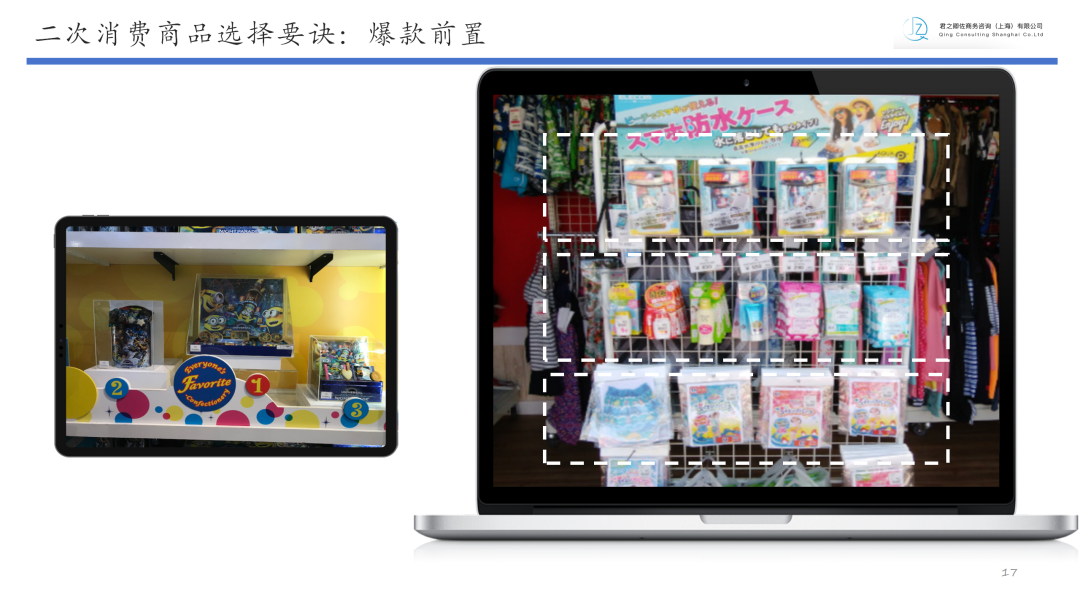
Price anchoring strategies are widely used in both scenarios:
* In theme parks, taking the sale of dolls at Shanghai Disneyland as an example, different sizes of dolls are offered to guide visitors to make a compromise choice, thus achieving sales goals;
* In water parks, taking water guns as an example, three different price points are usually set and displayed in ascending order from left to right, with the middle-priced product often being the best-selling.
In addition, we can learn from successful cases in American parks, such as selling inexpensive sunglasses at the store entrance and introducing high-end brand sunglasses inside the store, creating a price gradient to meet the needs of different visitor groups and thus increasing overall sales.
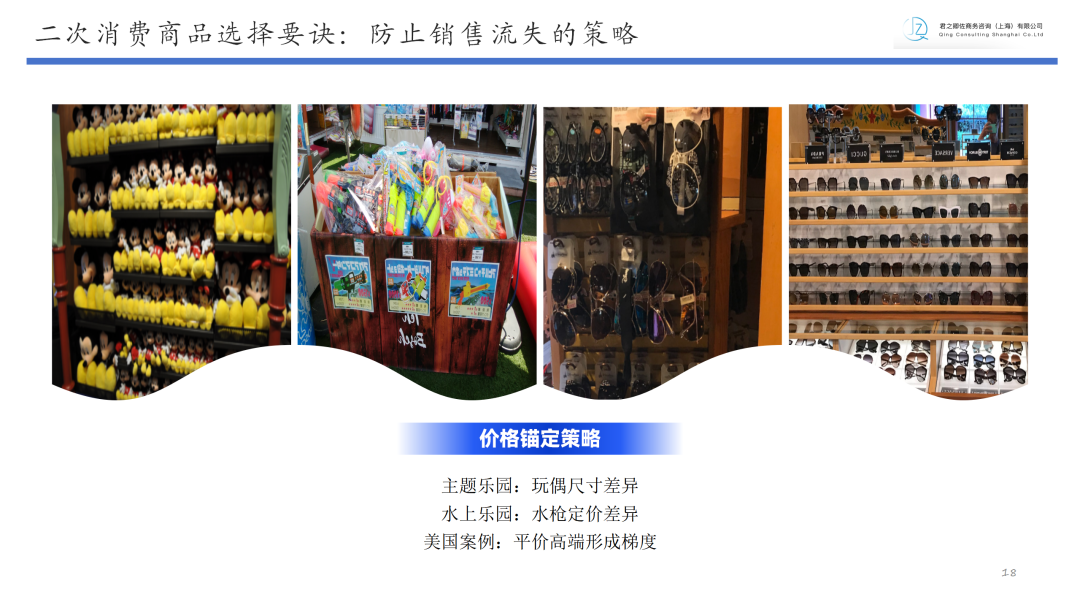
Water park product development needs to focus on the core attribute of "immediate necessity" and cleverly use price matrix strategies for product planning and layout. Although water parks themselves are highly attractive, we still need to carefully create "convenient, high-demand items" to further stimulate visitor spending and improve secondary consumption performance.
Here's a summary of keywords for water park secondary consumption improvement strategies:
For product sales, create a "convenience store" model, fully meet the needs for "forgotten items," and ensure "small and reasonably priced products."
For rental sales, meet visitors' needs for "superiority over others," and fully consider "heat avoidance and comfort."
For food and beverage sales, meet the needs for "warmth (hot food)" and "speed," allowing visitors to "delay departure."
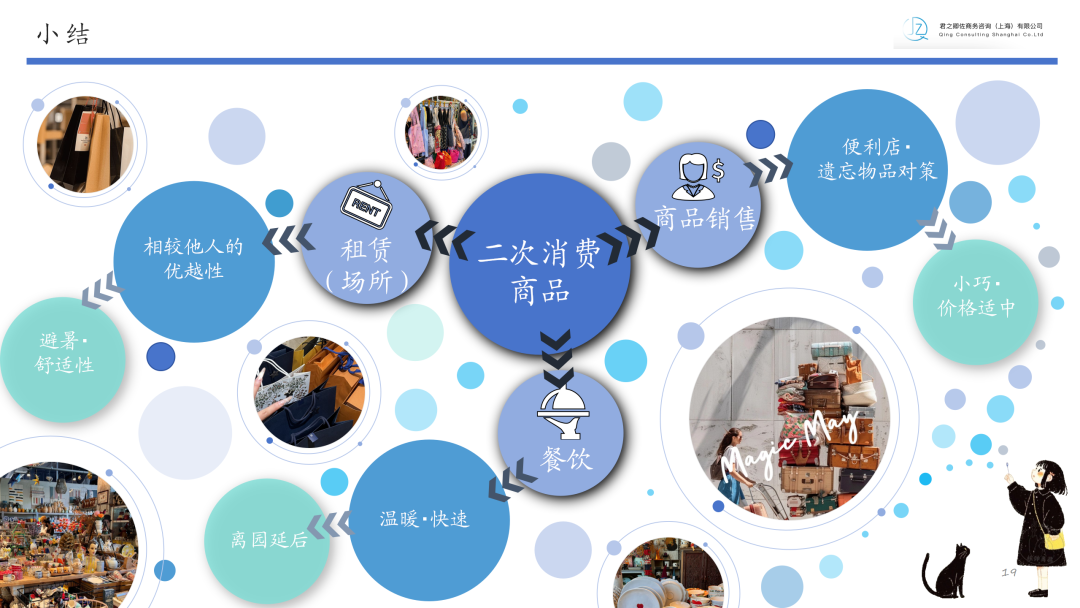

Finally, let's discuss innovative measures for nighttime operations:

1. Fashion magazine collaboration: Collaborate with fashion magazines to create uniquely attractive photo scenes, thereby enhancing the overall brand value of the water park;
Relax dress code restrictions: This measure aims to attract non-swimsuit customers, allowing them to experience the unique atmosphere of a nighttime water park and further expanding the customer base.
From an industry perspective, water parks need to break free from traditional tourism media and deepen cooperation with swimsuit-related media to more accurately reach target audiences and enhance brand awareness and influence in specific fields.
The above is a detailed sharing of how to improve secondary consumption in water parks, based on my years of field investigation experience and in-depth research and analysis. I hope these insights will provide useful reference and guidance, helping water parks stand out in fierce market competition and achieve sustainable, high-quality development.
( This article is provided by Jun Zhi Qing Zuo Business Consulting (Shanghai) Co., Ltd.
Jun Zhi Qing Zuo Contact Information:


From June 12-13, the China Association of Travel Agencies (CAAPA) will hold the 2025 China Family Tourism Innovation and Development Forum at Shanghai LEGOLAND Resort. Click here for details
Key words:










